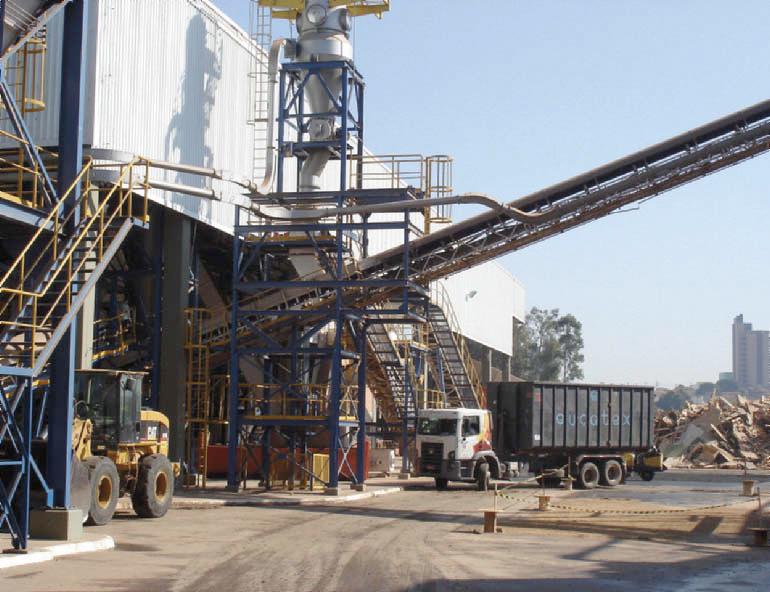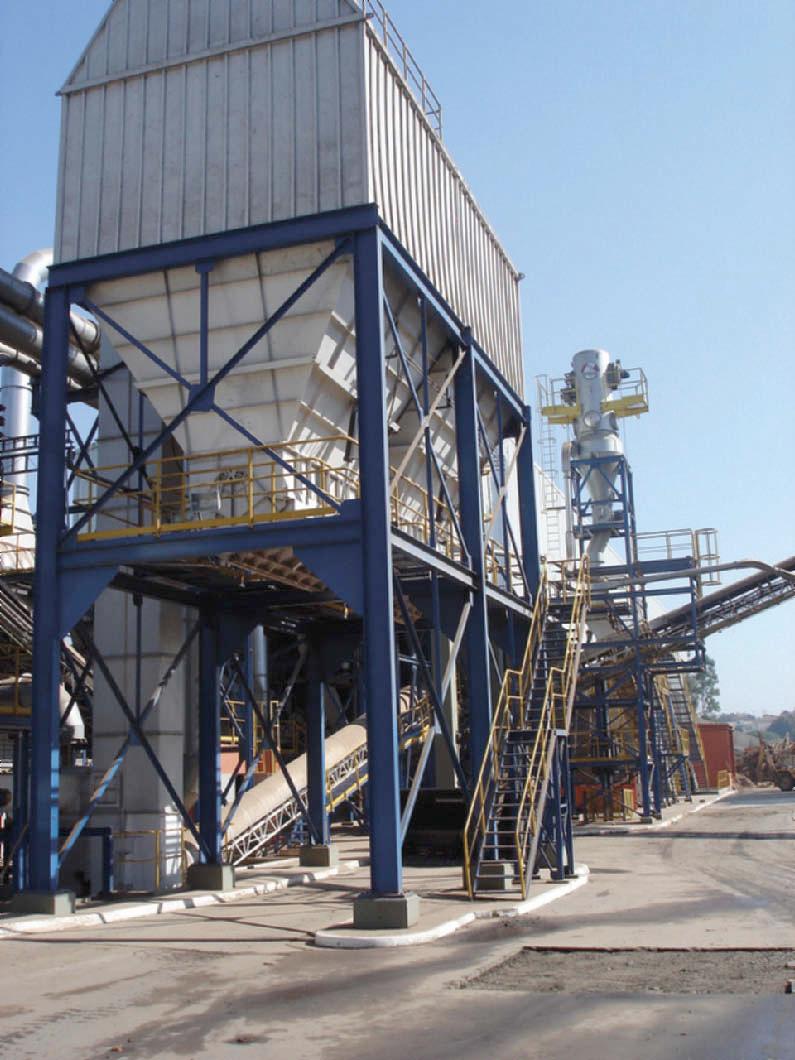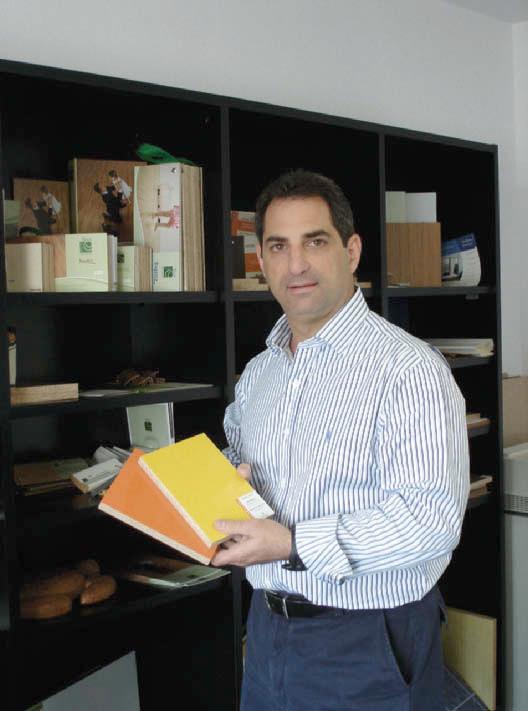Man of vision
1 December 2009MrMaluf’s emphasis on stimulating market demand through developing a wide range of distinctive finished panel products has helped Eucatex remain a leading sector player, although it only recently emerged from several years in Brazil’s equivalent of the US Chapter 11 bankruptcy protection.
The panel business is not about moving a commodity, but rather creating a ‘desirable’ product to appeal to the customer and result in fresh demand, explains Mr Maluf. “The great challenge in the end is to make a product, not simply a board,he said.
“We have many worldwide patents taken out in recent years and we are still making new products to compete in a market, where other companies need at least three to four years to copy,said Mr Maluf when he spoke to WBPI in São Paulo in June.
An established MDP (medium density particleboard) and wet process hardboard producer, Eucatex is now on the verge of adding dry process fibreboard products to its panel portfolio. Initially, it plans to launch a 350,000m3/year plant for thin HDF/MDF early next year, and is studying a second major project to build a 500,000m3/year eucalypt MDF plant, possibly in Mato Grosso do Sul state.
The company’s long-awaited shift into MDF/HDF marks another innovative step for its executive president. His first plant, currently taking shape in Salto, São Paulo state, will focus on making 2- 9mm HDF board and painted, melamine laminated and flooring products.
“There’s no plant in Brazil that specializes in this niche market. We understand we’ll be unique in that from 2-9mm we’ll offer the best cost and be producing the best [HDF] product available in Brazil,explained Mr Maluf, whose family remain significant Eucatex shareholders.
He said the new plant will target a Brazilian market for thin fibreboard, under 10mm thickness, currently about 30,000m3/month, representing 15-20% of the total MDF/HDF market. Its quality HDF product will be aimed at applications where, because of Brazil’s climatic variations and humidity, MDF has been used incorrectly, he explained.
Examples of these include door jambs, moisture-sensitive furniture applications, such as in kitchens, and some mouldings, according to Mr Maluf. “We know that MDF.....is being used in the wrong way in several applications. Later on, we think that this will be recognized by the market,he told WBPI.
As a major global exporter of hardboard, Eucatex intends to sell a significant proportion of its new HDF product abroad; despite the world economic crisis, the company saw its hardboard exports during the first quarter of 2009 soar by more than 100%.
Mr Maluf reckons his company will have sufficient capacity on its new HDF line to export up to 40% of its output, not least because Eucatex has attracted potential customers for it. This year the panel maker was exporting its products to 37 countries around the globe, the executive president estimated.
Despite its strong export record, São Paulo city-based Eucatex has not remained unscathed in the worldwide recessionary storm which has blown through Brazil. At home, the furniture sector was at a low ebb mid-year, with plummeting sales made worse by the credit crunch and sky-high interest rates and with no sign of hoped-for government tax relief.
In the traditionally slower first half-year, the resulting shrinking demand and low prices saw Brazilian panel makers shutting down for periods and laying off workers. Eucatex saw sales in April and May fall dramatically, though the figures for the first half year showed MDP products, including laminate flooring, down by under 3%. That compared well against the MDP market, which fell by 18% during the period.
Now the company is firmly focused on completing and launching its HDF/MDF plant. Dominated by its 21m long Dieffenbacher continuous press, with a 2.75m panel width, the new line is equipped to produce both HDF and standard MDF, but will concentrate on thin HDF.
Wood preparation and the refining section of the line are being supplied by Metso of Sweden, while the glue kitchen and blending units are from Pal and Imal of Italy, with saws, transport and finishing operations supplied by another Italian company, EMG.
Eucatex intends to start up the new, improved woodyard operation including chipping, wood handling and storage by the end of 2009. The HDF/MDF plant is scheduled to roll no later than the second quarter of next year, but recent projections have the start-up as soon as February 2010.
The panel plant is another example of Maluf innovation. Eucatex is breaking with the trend set by most of Brazil’s existing MDF producers of installing Siempelkamp technology. Instead, it chose a Dieffenbacher continuous press line. In addition, the new plant includes several unusual features in the wood supply and processing and panel forming areas.
Among these is the inclusion of high grade waste wood fibre in the HDF line furnish, drawn from Eucatex’s 20,000 tonne/month recycling plant at the Salto site. The recycling unit already fuels much of the energy needs of the site’s two hardboard lines, as well as providing material for the hardboard process.
Eucatex originally installed the US$15m recycling line to provide biomass for its heavy energy consumption, as well as offering a regular source of production fibre in the face of soaring wood prices and the firm’s own limited plantation resource.
Claimed to be the biggest wood recycling line in South America, the unit was last year turning out around 10,000 tonnes of material a month, 80% of it going to the energy plant. The new HDF line is due to use between 10-15% of recycled fibre in its furnish, according to Mr Maluf.
“This is another innovation we’re using in Brazil with great success. We save the best [recycled] wood for the product and the worst wood for energy. In Europe recycled wood use is very common, but not here.
“It’s saved us about US$50m in investments in plantation land and forests every year,beamed the delighted Eucatex executive president. This big saving in capital costs results in a greater return on the firm’s overall investment, he added.
Another feature of the new woodyard being carved out of the crowded industrial site is more familiar at a paper woodpulp mill. Instead of employing large closed silos for chip storage, Eucatex is making use of a Metso-supplied open stack reclaimer system for handling the material.
This is a first for the fibreboard business, claims Mr Maluf, who argues that for this product, there is little point in protecting chips from humidity when you need to inject steam and water into it in the defibrator. Only in the US has the panel industry made limited use of stack reclaimers – in OSB manufacture – suggested Mr Maluf.
Much depends on the success of the innovative HDF project as to how, and how fast, Eucatex will develop as a fibreboard manufacturer. For the company, this plant represents a major experiment where it will test a number of novel process modifications and cost-saving approaches.
Eucatex is particularly targeting the high cost of resins used in fibreboard production. It is drawing on its 50-year experience of manufacturing wet process resin-free hardboard to modify the use of a raw material which can often cost more than the wood, revealed Mr Maluf.
He is reluctant to divulge details of modifications made to the new board line. Suffice to say that Eucatex has added several pieces of equipment on the line itself to “save resinand to test different types of resin in the process.
“We have good hardboard technology experience which will allow us to use this technology in the HDF plant,the president told WBPI in June.
His company’s priority right now is to complete the HDF/MDF project and to test the process innovations in the line to establish the costs involved and what products Eucatex can make.
“The HDF line is going to be a laboratory-laboratory in the first year for a big new plant we are planning,declared Mr Maluf.
Again, he stressed that Eucatex is definitely not in the business of producing just another MDF panel. “If we decide to build a new [MDF] line, that will be different from what you now have in Brazil, like our first [HDF/MDF] line. [With that one] we have the first
Dieffenbacher press in Brazil for fibreboard,he emphasised.
What of the future for Eucatex’s original panel business – hardboard? The company is now one of a dwindling band of producers of the wet process product that nevertheless continues to attract surprising demand from export markets around the world. This year saw Brazil’s other hardboard champion, Duratex, close three press lines at its second hardboard plant in Jundiai.
Despite his firm’s latest investments in thin HDF, Mr Maluf is emphatic about his commitment to hardboard. “We’re not going to drop out of hardboard. It is a very good product: low-cost and very profitable,he responded.
Eucatex runs two Washington Ironworks press lines – among the biggest in the world, feeding a growing clientele in Brazil and around the globe with eucalyptus- based hardboard. The lines, which produce panels around the clock, continue to give good service after a series of modifications over the years.
“We are working year by year, upgrading our big hardboard lines. We are still working on that and will continue to do so next year (2010),said the Eucatex president.
Looking ahead, Mr Maluf believes the first MDF production line will need to run for “at least six to seven monthsbefore Eucatex can begin to make a preliminary assessment on how best to develop MDF products. The president anticipates his company will make a final decision on its big plant project in 2012.
Commenting on the first of this year’s consolidation moves in the Brazilian panel industry, Mr Maluf welcomed the merger of MDF and MDP leaders, Duratex SA and Satipel Industrial SA, as “healthyfor the market. Speaking in late June, he predicted further takeovers in Brazil.
But, where does he see Eucatex fitting into this new order, dominated by a few large Brazilian industry players? He was coy about revealing details of his company’s long-term strategy, but was confident it was in for the long haul.
“You have to know your business and know clearly where you want to be in five to 10 years from now. We know exactly where we want to be,he declared. He expects his company to grow in coming years, though his target for Eucatex is not simply to be big, but to achieve greater profitability.
Growth could mean acquiring or merging with another panel producer in the next three to four years, he admitted. “But if we don’t merge or buy, and we see (market) space to put our products, we will set up a new plant,said the executive, adding that demand for the products it creates is the most important thing for Eucatex.
Acknowledging the firm will face stiffer than ever competition in future, its president is bullish about its long-term strategy. Mr Maluf aims to emulate “companies like Appleand others in the electronics and automotive sectors who are in huge competitive markets.
“They create products that make people desire those products,explained the Eucatex boss, who appears determined that his independent market approach will guarantee a leading role in Brazil’s new-look panel making sector.


